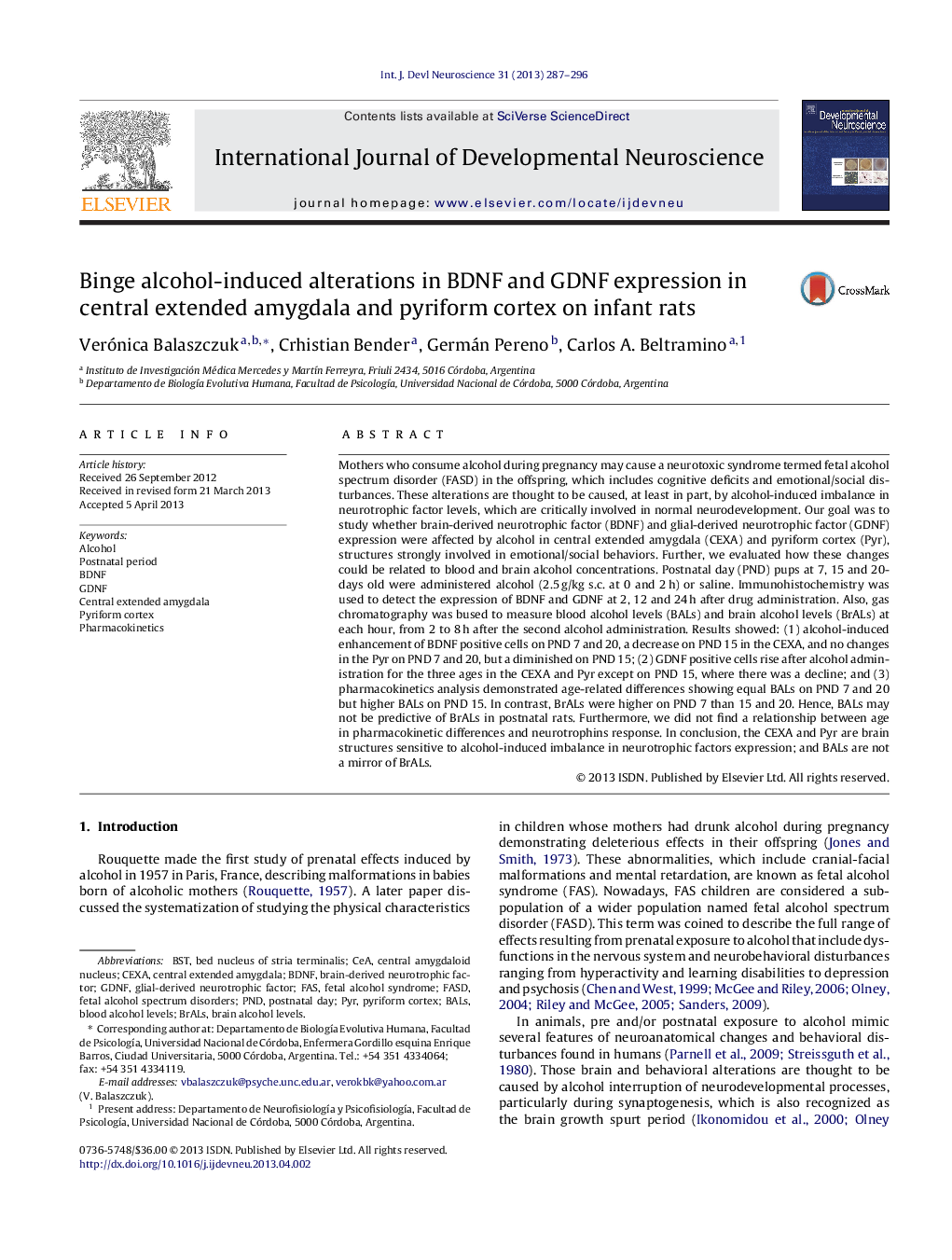| Article ID | Journal | Published Year | Pages | File Type |
|---|---|---|---|---|
| 2785977 | International Journal of Developmental Neuroscience | 2013 | 10 Pages |
•Alcohol alters brain and glial derived neurotrophic factor level in neurodevelopment.•Central extended amygdala and pyriform cortex are sensitivity to alcohol effect.•Alcohol pharmakokinetic is different on postnatal day 7, 15 and 20.•Brain alcohol levels are not parallel of blood alcohol levels in postnatal rats.
Mothers who consume alcohol during pregnancy may cause a neurotoxic syndrome termed fetal alcohol spectrum disorder (FASD) in the offspring, which includes cognitive deficits and emotional/social disturbances. These alterations are thought to be caused, at least in part, by alcohol-induced imbalance in neurotrophic factor levels, which are critically involved in normal neurodevelopment. Our goal was to study whether brain-derived neurotrophic factor (BDNF) and glial-derived neurotrophic factor (GDNF) expression were affected by alcohol in central extended amygdala (CEXA) and pyriform cortex (Pyr), structures strongly involved in emotional/social behaviors. Further, we evaluated how these changes could be related to blood and brain alcohol concentrations. Postnatal day (PND) pups at 7, 15 and 20-days old were administered alcohol (2.5 g/kg s.c. at 0 and 2 h) or saline. Immunohistochemistry was used to detect the expression of BDNF and GDNF at 2, 12 and 24 h after drug administration. Also, gas chromatography was bused to measure blood alcohol levels (BALs) and brain alcohol levels (BrALs) at each hour, from 2 to 8 h after the second alcohol administration. Results showed: (1) alcohol-induced enhancement of BDNF positive cells on PND 7 and 20, a decrease on PND 15 in the CEXA, and no changes in the Pyr on PND 7 and 20, but a diminished on PND 15; (2) GDNF positive cells rise after alcohol administration for the three ages in the CEXA and Pyr except on PND 15, where there was a decline; and (3) pharmacokinetics analysis demonstrated age-related differences showing equal BALs on PND 7 and 20 but higher BALs on PND 15. In contrast, BrALs were higher on PND 7 than 15 and 20. Hence, BALs may not be predictive of BrALs in postnatal rats. Furthermore, we did not find a relationship between age in pharmacokinetic differences and neurotrophins response. In conclusion, the CEXA and Pyr are brain structures sensitive to alcohol-induced imbalance in neurotrophic factors expression; and BALs are not a mirror of BrALs.
